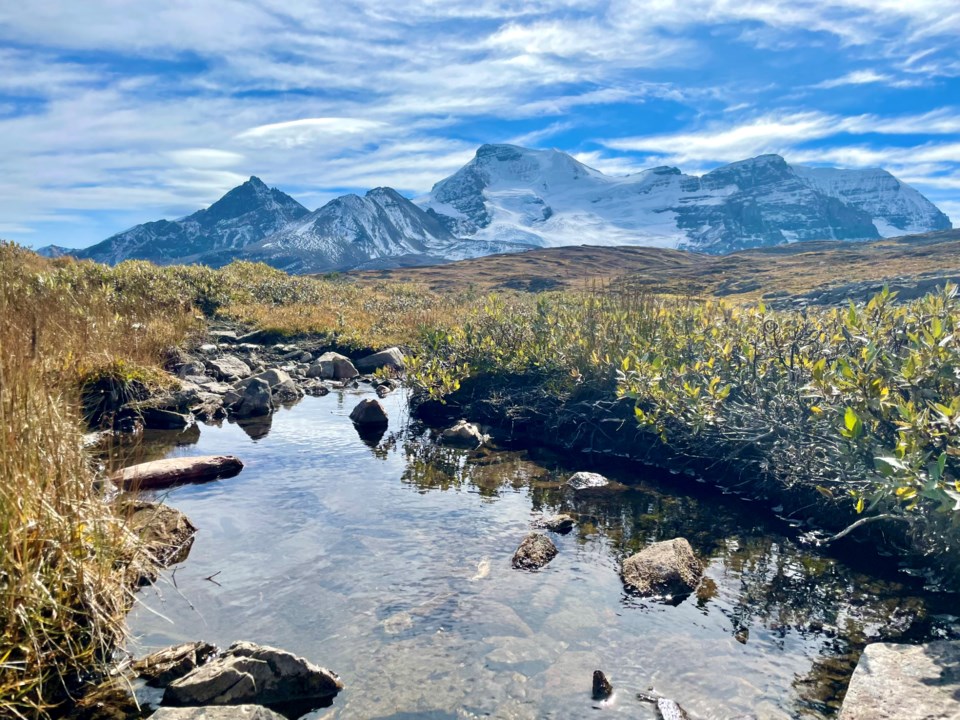Conservation is not only good for wildlife and native plant species but it is also good for climate change.
On Jan. 31, the Nature Conservancy of Canada (NCC) purchased 255-hectares of land near Waterton lakes National Park to create a corridor for wildlife in the area and Mark Boyce, a professor of ecology at the University of Alberta, said conservation projects such as these can also help in preventing and adapting to climate change.
“Native species almost always do better. They're locally adapted to that site. There's nothing better in terms of the productivity, in terms of primary productivity, and in terms of carbon sequestration and storage then the native assemblage of plants,” Boyce said.
The land “builds on over 13,000 hectares of private conservation lands surrounding Waterton Park, known as the Waterton Park Front,” according to a press statement from the NCC.
The conservation site is comprised of two separate land parcels and both support fescue grasslands, forests, wetlands and riparian (riverside) ecosystems along the Waterton River.
“These are important habitats for many wildlife, including species at risk such as American badger (special concern), bobolink (special concern) and horned grebe (special concern), all of which have been previously documented nearby,” the press statement read.
The “natural state of the land” was previously maintained by cattle ranching, but “shifting economics” may have changed how the land was being used, said the NCC. And landowners were looking towards agricultural, residential, and recreational development to sustain livelihoods.
Boyce said carbon emissions are greatly increased by agricultural tillage.
“The most important thing that we can do is to maintain permanent grassland cover on grasslands and to prevent cutting down or the burning trees in the forest.
“Grasslands are particularly valuable because they sequester carbon from the atmosphere and sink it into the soil where it's going to be there for a long time. There's hardly anything better than grasslands as a sink for carbon,” he continued.
Natural vegetation is important because it is diverse.
“We have a large diversity of plants and animals that occur on natural areas,” said Boyce.
Individual species exploit the environment in different ways. Species such as forbs have deep roots and sink carbon deeper into the soil. Other species may have greater production but with a root system that is not so deep.
“One thing we do know is that more diverse assemblages of plants retain carbon in the annual cycle much better than a low diversity like a tame pasture,” he said.
A tame pasture includes tame grasses like Kentucky Bluegrass instead of native species.
Conserving land and allowing native flora and fauna to be preserved will also be helpful in adapting to climate change.
“We need to have a number of (conservation spaces) across the landscape because as the climate changes, the adaptation is going to change, we're going to have a different composition of plants and animals occurring as the climate changes,” said Boyce.
Animals that are adapted to the conditions we have right now, “may not be the right mix in 50 years,” said Boyce.
Maintaining natural areas across the landscape gives plants and animals an opportunity to shift in their distributions.
There are over 1000 conservation sites across the province and a few key private organizations purchasing land for the purpose of conservation including the Nature Conservancy of Canada, Ducks Unlimited — which Boyce noted has more land in Alberta than the NCC, the Alberta Conservation Association which owns land across the province and maintains the land for hunting and fishing while leaving the vegetation on the landscape, and Alberta Fish and Game Association.
The province also has smaller local-based groups including the Southern Alberta Land Trust Society (SALTS) and the Edmonton Area Land Trust.
Boyce said more needs to be done in the province when it comes to conserving land and he would like to see habitat for the boreal caribou protected.
“There aren't any areas set aside for caribou protection, and there's no excuse for it because we have regions for example, the Caribou Mountains in northern Alberta, it's not a good area for oil and gas. It's a perfect area to set it aside and leave it for the caribou, but also up Bistcho Lake in northwestern Alberta. Leave it for the caribou. Get out of there,” he said.
The protection of caribou goes hand in hand with the protection of peat lands which are an enormous sink for carbon, said Boyce.
“If we disturb those landscapes, what happens is that results in melting of the permafrost and releases enormous amounts of methane and carbon dioxide into the atmosphere where we want to keep it intact. We don't want to mess with the surface in peatlands, or in bogs, because they're such important things for vast amounts of carbon,” he said.
Overall, Boyce said Alberta has a wonderful assemblage of provincial parks and protected areas.
“We need to maintain those. They have been accumulated over the years because these areas were important for some reason, oftentimes, it's a unique species that occurs there or a unique habitat. One of my fears with the new government, is that they're going to open those areas up and allow industrial development,” said Boyce.
“That would be a travesty.”



